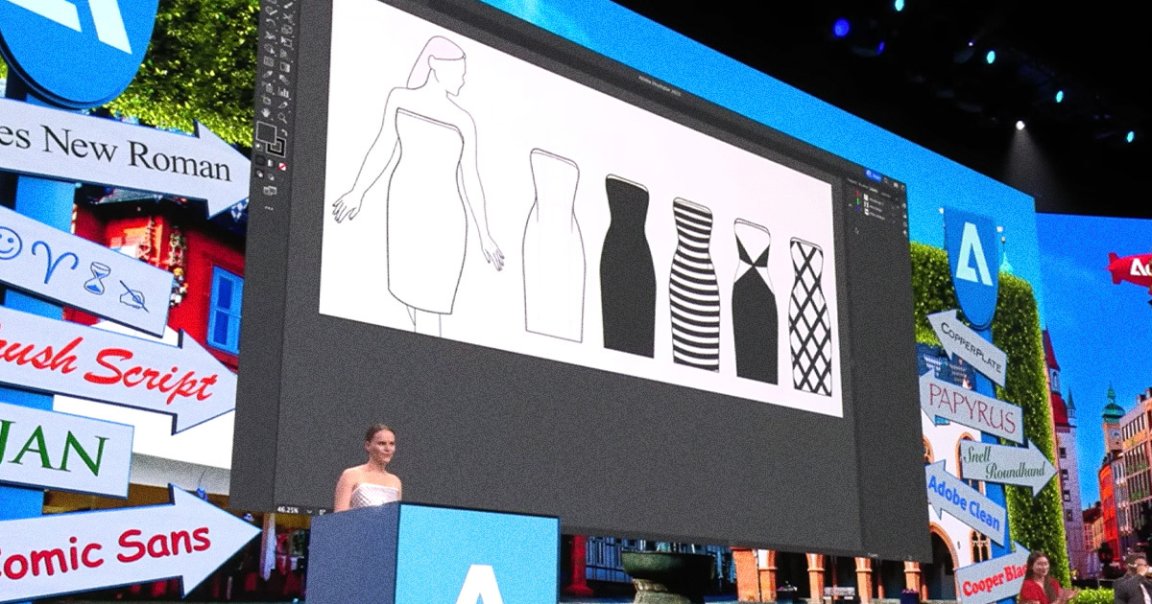
Dress For Success
Adobe has unveiled a sparkling, interactive dress — and got the research scientist who created it to model the high-tech couture.
Video of the dress debut shows researcher Christine Dierk wearing the slinky strapless number that, upon first glance, looks like the average sequined cocktail dress. With the click of a handheld remote, however, the dress began to shift patterns like something out of a fashion-forward science fiction film.

Created under Adobe’s “Project Primrose” initiative, this “digital dress,” as Dierk described it for the audience at Adobe’s MAX conference last week, “brings fabric to life.”
“Unlike traditional clothing, which is static, Primrose allows me to refresh my look in a moment,” the Adobe scientist said, demonstrating the clothing’s capabilities by having its colors go from light to dark in an instant.
The digital dress patterns can also, as Dierks demonstrated, be animated, and will even respond to movement — though that last feature appeared glitchy and didn’t work at first.
The researcher-turned-model also told the hosts of her portion of the convention that she not only designed the dress with the help of her team at Adobe, but also stitched it herself.
Lightmare
While the specs of this particular smart garment haven’t been published, the high-tech sequins used for smaller Project Primrose offerings, a handbag and a canvas, were described by Dierks and her co-researchers last year in an article presented at a tech conference.
As the article explains, those “sequins” are actually “reflective light-diffuser modules” that use reflective-backed polymer-dispersed liquid crystals (PDLC), which are most often used in smart lighting. Technically, all those sequins are tiny screens.

While the paper brags that these next-level paillettes “can be cut to any shape,” one would imagine that even if they’re not heavy on their own, they would ultimately weigh a lot when hundreds are sewn onto a dress like the one Dierks modeled — which is, perhaps, why the dress only features the smart sequins on its front, as the researcher’s demonstration of its capabilities betrays. And let’s be real: this thing’s probably not machine washable.
The Project Primrose dress is, to be sure, the latest in a long line of high-tech fashion exploits which were arguably kicked off in 1999, when the late designer Alexander McQueen positioned supermodel Shalom Harlow on a turntable between two robots equipped with paint spray guns and had them spray the puffy white dress she was wearing in black and yellow.
During a Paris show last September, French label Coperni seemed to pay homage to Harlow’s McQueen moment when her fellow supermodel Bella Hadid had a dress made out of the sprayable fabric called Fabrican, which was deployed by two human techs in much the same fashion as the robotic arms from McQueen’s show more than 20 years prior.
Just over a year later, Adobe has entered the fashion tech arena as well — though its display was, of course, much more tech-focused than the fashion dramatics used by McQueen and Coperni.
More on tech and fashion: Perplexing AI Video Turns “Harry Potter” Into Balenciaga Ad